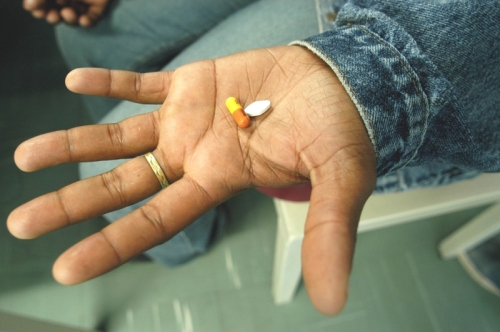
Actors making pornographic movies in Los Angeles will be required to use condoms while filming, under a new law signed by the city mayor.
The new regulation has been welcomed by health officials but pornography industry leaders say it could force them to abandon the city.
LA’s San Fernando Valley is considered the capital of the multibillion-dollar US adult film industry.
Correspondents say it is not yet clear how the new law will be enforced.
The LA-based Aids Healthcare Foundation welcomed the move saying it was crucial in protecting adult film actors from HIV and other sexually transmitted diseases.
The foundation, which has campaigned for the measure for six years, said it would now seek similar condom requirement elsewhere in the US.
“The city of Los Angeles has done the right thing. They’ve done the right thing for the performers,” said foundation president Michael Weinstein.
He said his group would also be vigilant in keeping track of where porn producers might move to.
Several of the industry’s biggest adult filmmakers have said they might consider moving just outside city boundaries.
They insist that adult films featuring condoms are not as popular and that some actors prefer not to use them.
The new law was signed by Los Angeles Mayor Antonio Villaraigosa on Monday.
The city council has now asked the police, city attorney’s office and workplace safety officials to figure out how they enforce the rule, the Los Angeles Times reports.
Industry experts estimate as many as 90% of all pornographic films produced in the US are made in Los Angeles.
Last year, pornographic film productions across the US were temporarily shut down after an adult film performer tested positive for HIV – the virus that causes Aids.
Above article via BBC News
Our message is clear!
Condoms provide the best protection from HIV and other sexually transmitted infections. HIV stands for human immunodeficiency virus. It was identified in the early 1980s and it belongs to a group of viruses called retroviruses.
Normally, the body’s immune system would fight off an infection, but HIV prevents the body’s immune system from working properly. HIV infects key cells in the body’s natural defences called CD4 cells, which co-ordinate the body’s response to infection. Many CD4 cells are destroyed by being infected, and some stop working as they should.
Although HIV can’t be cured, it can be treated. Modern HIV treatment means that many people with HIV are living long, healthy lives and can look forward to a near-normal lifespan.
AIDS
If HIV isn’t treated, the gradual weakening of the immune system leaves the body vulnerable to serious infections and cancers which it would normally be able to fight off. These are called ‘opportunistic infections’ because they take the opportunity of the body’s weakened immunity to take hold.
If someone with HIV develops certain opportunistic infections, they are diagnosed as having AIDS. The term ‘AIDS’ stands for acquired immune deficiency syndrome. People diagnosed as having AIDS can become unwell with a range of different illnesses, depending on the specific opportunistic infections they develop. This is why AIDS is not considered a disease, but a syndrome – a collection of different symptoms and illnesses, all caused by the same virus, HIV.
Most people who have HIV have not had an AIDS diagnosis. Also, if someone develops an AIDS-defining illness this doesn’t mean that they are on a one-way path to illness and death. Thanks to HIV treatment, many people who were once diagnosed as having AIDS are now living long and healthy lives.
Have you ever had a HIV test?
If you’re interested in having a HIV test, we offer a completely free and confidential rapid HIV test and you’ll get the results within 60 seconds from a simple finger prick test. We use the Insti HIV test produced by BioLytical laboratories. The test is 99.96% accurate from 90 days post contact for detecting HIV 1 and 2 antibodies. We also have a mobile testing van which is often out in communities providing mobile rapid HIV tests. Appointments are not always necessary, if you would like a test, please contact us on 0116 2559995









